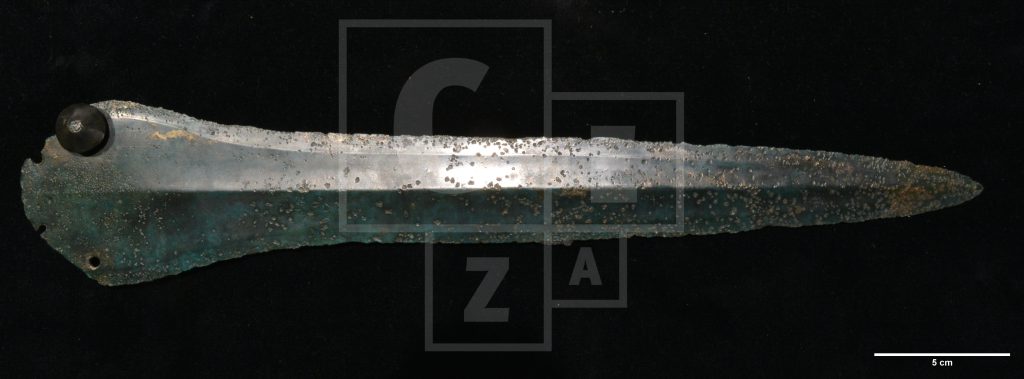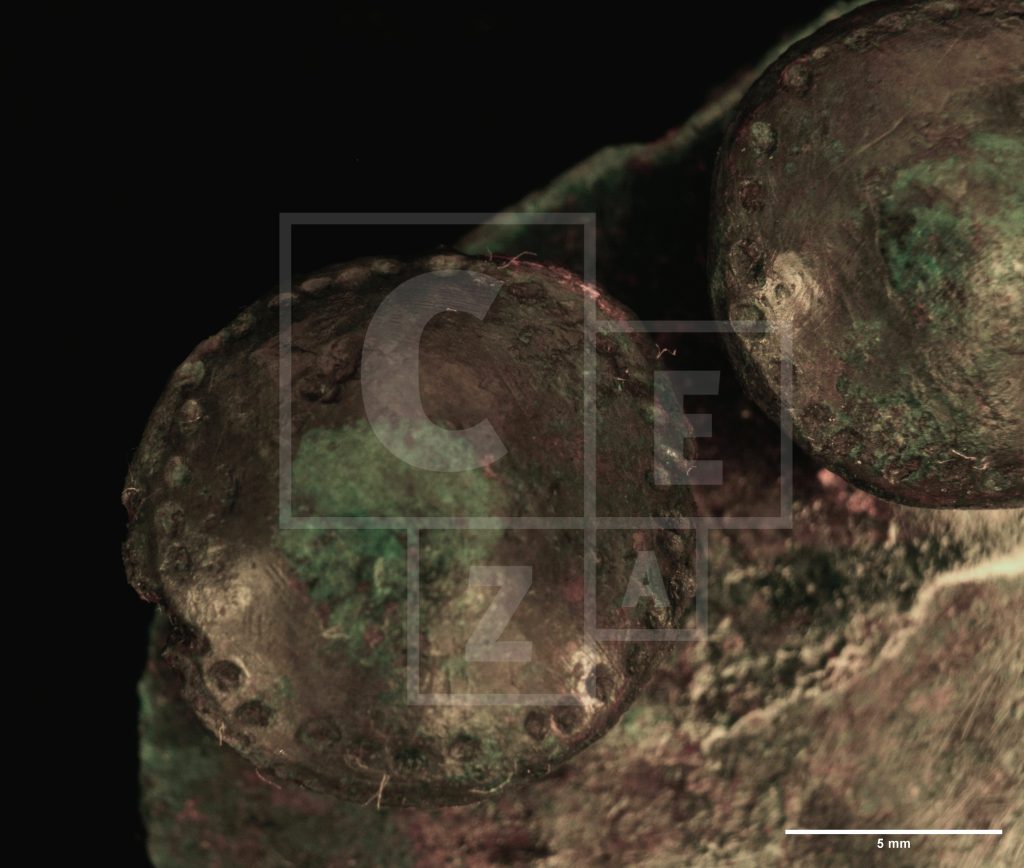Czechia is one of the destinations that could not be missed as the counties of Pilsen and Southern Bohemia had some excellent finds that could be related to the Nordic Sögel and Wohlde blades. Previously, we have already been to the Moravian Museum in Brno to study a blade that is reminiscent of a type Statzendorf, but it had the typical decorative pattern of dots, lines and garlands that we see on the Sögel or Carpathian blades. It is difficult to tell at this point whether the decorations were inspired by Nordic or Carpathian tradition, but the similarities are striking. Trapezoidal blades, like the type Statzendorf, were mostly present here but a welcome notification by Ondřej Chvojka of the Museum of South Bohemia informed us about a rounded hilt blade that has been published not too long ago. This blade appears to be of the rarer type Haidershofen. This find makes it the third of this type, now included in the project and nearly all known Haidershofen blades will then be analysed. The archaeometallurgical relationship to the Nordic blades are of course the focus of the project. However, a near full analysis of a single type of artefact like Haidershofen could bear interesting results as well.
In any case, thanks to the cooperation of National Museum in Prague, Museum of South Bohemia as well as the museum of West Bohemia in Pilsen, we have been able to analyse nearly all the relevant blades in Czechia. A special mention perhaps is that the museums all looked gorgeous and it was a pleasure to be able to visit them.
All in all, the blades were a mix of rounded and trapezoid hilt blades, including some of the rarer type Varen and Haidershofen. These blades are mostly related to other blades found along the Danube in Southern Germany and Austria. This is based on similarities in design and decorations such as the presence of decorated rivets. A trait that is dominant in the Danubian region.

Probable Haidershofen type blade from Křemže-Dívčí Kámen, currently in the South Bohemian Museum in České Budějovice

Decorated rivet of a trapezoidal blade from Koloveč, currently in the Museum of West Bohemia, Pilsen